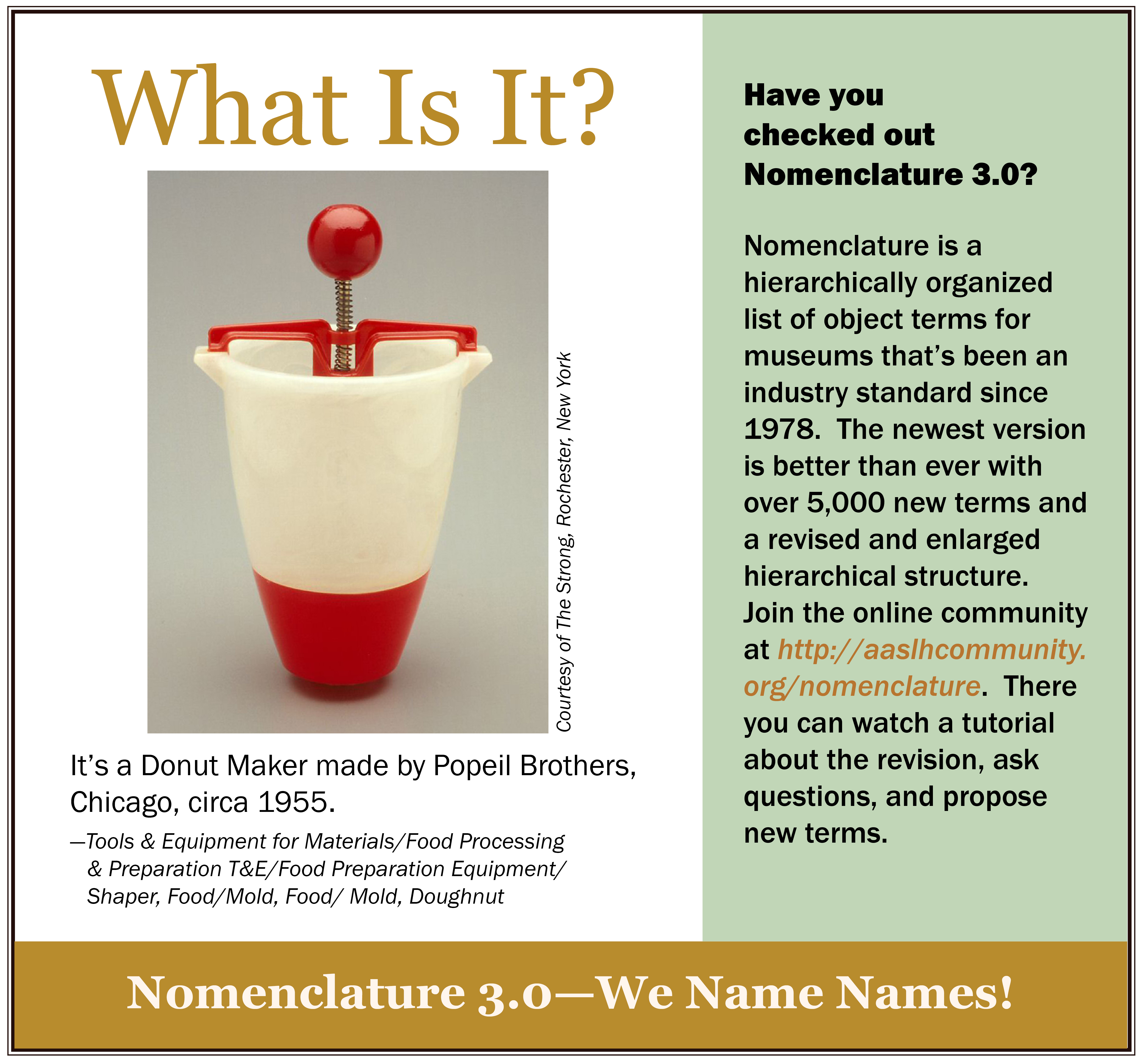 Nomenclature 3.0 for Museum Cataloging is a structured and controlled list of object terms organized in a hierarchical classification system. It provides a way to index and catalog collections of human-made artifacts based on their function. A museum standard for over 30 years, the third edition of Nomenclature, produced in 2010, includes over 5,000 new object terms. More importantly, the lexicon has been improved and expanded, grouping similar object terms and offering increased levels of naming. These enhancements help catalogers determine the best term quickly and accurately.
Nomenclature 3.0 for Museum Cataloging is a structured and controlled list of object terms organized in a hierarchical classification system. It provides a way to index and catalog collections of human-made artifacts based on their function. A museum standard for over 30 years, the third edition of Nomenclature, produced in 2010, includes over 5,000 new object terms. More importantly, the lexicon has been improved and expanded, grouping similar object terms and offering increased levels of naming. These enhancements help catalogers determine the best term quickly and accurately.
How Can a Museum Adapt Nomenclature 3.0 to Suit its Own Needs?
While museums with specialized collections will appreciate the level of specificity they can achieve when cataloguing, not all institutions will require this level of naming. As Nomenclature points out, museums are encouraged to determine how far they want to go. Catalogers with a collection of carpenter’s planes may decide to use only the primary object term “Plane” or they may differentiate further between “Plane, Leveling” and “Plane, Grooving.”
The lexicon does not include all possible names for all possible museum artifacts. Rather than clutter Nomenclature 3.0 with multiple terms for musical instrument cases (e.g., “Case, Clarinet,” “Case, Trumpet,” “Case, Flute”), the generic primary object term “Case, Musical Instrument” is provided. Institutions with an extensive musical instrument collection can modify the lexicon by adding further specialized instrument cases as secondary terms under the generic primary term.
As long as new terms are added within the Nomenclature 3.0 framework, the reasons for adding the terms are documented, and the additions are made after careful consideration, the lexicon will function properly. When adding terms, it’s best to refer to the definitions given for the classifications and sub-classifications and to review existing object terms carefully to determine if any of them qualify as a broader term for the term to be added by the institution.
How Can You Find out More about Nomenclature 3.0?
As a way to introduce Nomenclature 3.0 to the museum public, the American Association for State and Local History (AASLH) has established an online community for users of Nomenclature 3.0 for Museum Cataloging: http://aaslhcommunity.org/nomenclature/.
There, visitors can find a tutorial explaining the changes found in the third edition and keep up with the news on such issues as the lexicon’s adoption by software vendors, upcoming presentations, etc. Users can also query experts about the proper name for an object, propose new terms, and find recent updates to the lexicon.
Although many improvements have been made to meet the needs of its users and to reflect changing museum standards, Nomenclature will always be a work in progress. It is hoped that this new edition helps museums improve their data management and provides a firm foundation upon which future editions will be based.
The AASLH’s The Nomenclature Committee also invites museum cataloguers to participate in its Nomenclature Future Updates Survey. Your input is necessary to ensure that the Committee has the necessary input from users in the field.








Add new comment